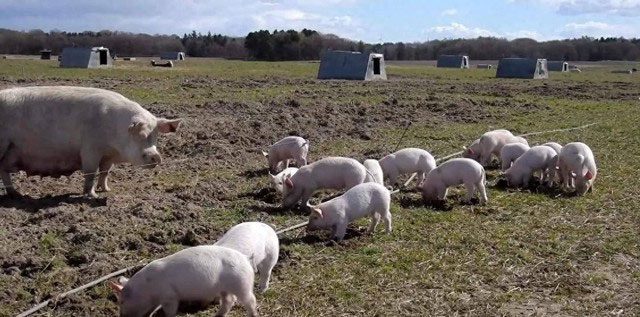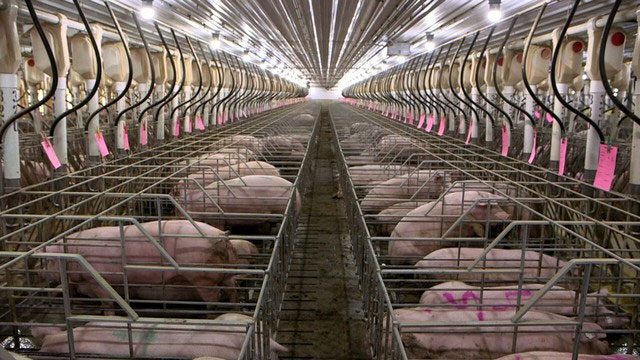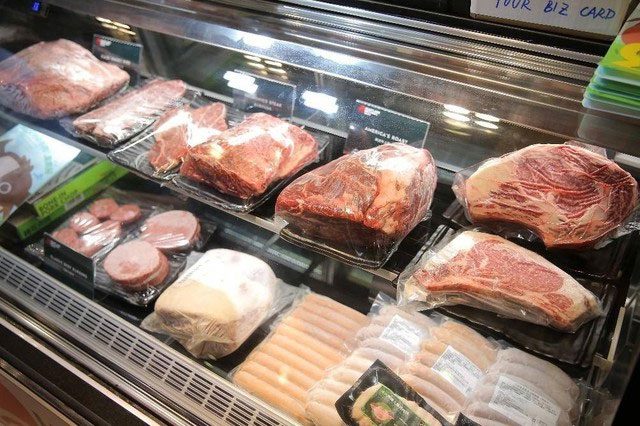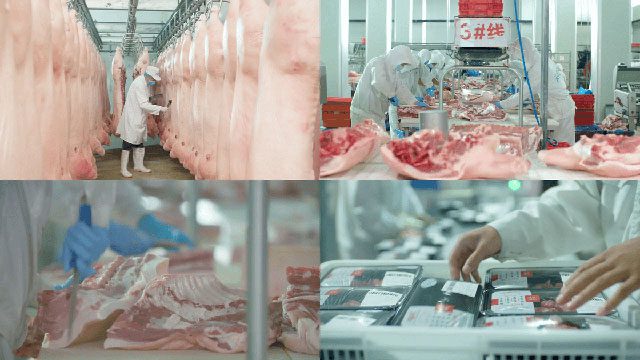In the United States, beef and chicken are the most common types of meat in daily meals. However, few people know that the country is one of the largest pork producers in the world.
While pork is not predominant on American dinner tables, the nation maintains a large-scale pig farming industry, producing over 10 million tons of pork each year, which accounts for about 20% of global output. What drives the U.S. to heavily invest in pig farming despite the domestic market’s low demand for pork?

The Midwest region of the U.S. is well-suited for large-scale pig farming.
One of the key factors that help the U.S. become a leading nation in pig farming is its favorable natural conditions. Particularly, the flat terrain, vast pastures, and temperate climate of the Midwest are ideal for large-scale farming. The Midwest plains are not only the heart of American agriculture but also a solid foundation for the pork industry. In addition, the Mississippi River system and the Great Lakes provide abundant water resources, ensuring the sustainable development of farming operations.
Thanks to these ideal natural conditions, the U.S. excels not only in beef and chicken production but also ranks among the top countries in pork production. Statistics show that the annual beef output in the U.S. exceeds 12 million tons, accounting for nearly 20% of the world’s total beef production. Chicken production is also significant, reaching over 40 million tons each year. However, with more than 10 million tons of pork produced annually, the U.S. still ranks third in the world after China and the European Union.

The U.S. ranks third in the world after China and the European Union in pork production.
The primary reason the U.S. invests heavily in the pig farming industry is the high global demand for pork. Pork is the most consumed meat in the world. In 2021, the total global pork consumption reached 101 million tons, significantly higher than the 70 million tons of beef and 90 million tons of chicken. This highlights the important role of pork in the daily meals of many countries, especially in Asia and Europe, where pork is preferred over other meats.
Producing pork also incurs relatively low costs compared to beef, especially within modern and efficient production systems. With advanced farming technology and large-scale production, the U.S. has significantly reduced production costs, allowing it to offer pork to the international market at very competitive prices. This economic advantage is a crucial factor driving the U.S. to expand production and boost pork exports.

The U.S. has advanced farming technology and large-scale production.
The U.S. has pioneered the application of high technology in pig farming, enhancing both productivity and product quality. Since the 1980s, the number of pig farms in the U.S. has decreased from 650,000 to around 70,000. However, this decline does not reflect a reduction in production; rather, it indicates a shift in farming methods. The adoption of automation technology has enabled large farms to operate more efficiently, minimizing the labor required and optimizing production processes.
Many farms in the U.S. utilize automated feeding systems and smart feed management, which can adjust the diet based on the specific needs of each pig. These systems are equipped with advanced sensors and data analysis tools that monitor the health and growth of pigs, ensuring each pig receives the appropriate amount of nutrition. The implementation of this technology not only reduces waste but also enhances meat quality, ensuring the final products meet high market standards.

The application of technology helps minimize waste and enhance meat quality.
Another important factor in modern pig farming in the U.S. is the scientific and efficient management of the living environment of pigs. Large pig farms utilize temperature sensors and emission monitoring systems to maintain an ideal environment in the barns. Monitoring temperature, humidity, and the levels of gases like ammonia and carbon dioxide helps prevent health issues for pigs, while minimizing the risk of disease outbreaks.
These systems also aid in early detection of health problems and provide critical data for effective barn management. As a result, the care and management of pig herds become more precise, ensuring pigs have the best living conditions, reducing stress, and improving productivity.

Gene editing helps improve meat quality and enhance pigs’ growth performance.
The U.S. has also been at the forefront of applying biotechnology in pig farming, particularly CRISPR/Cas9 gene editing technology. This technology allows scientists to create genetic modifications that help pigs resist certain diseases, such as Porcine Reproductive and Respiratory Syndrome (PRRS) – a disease that severely affects pigs’ reproductive capabilities. In this way, pigs can be better protected from diseases, improving farming efficiency and minimizing economic losses.
Gene editing technology also enables the modification of certain genetic traits to enhance meat quality and growth performance in pigs. For example, the Hampshire breed of pigs in the U.S. has been selectively bred and improved over generations to have a robust physique and good production capabilities. Hampshire pigs can weigh between 200-300 kg for sows and 315-410 kg for boars, yielding high productivity and substantial economic value.

The pig farming industry remains an integral part of America’s economic development strategy.
The pig farming sector in the U.S. plays a crucial role not only in the country’s agricultural economy but also in the global food supply chain. By leveraging favorable natural conditions, applying high technology, and expanding production scale, the U.S. has established itself as one of the leading producers and exporters of pork worldwide.
This demonstrates that, although pork is not a popular choice on American dining tables, the pig farming industry remains an essential part of the economic development strategy and food security of the U.S. Investments in technology and the optimization of production processes have enabled the U.S. not only to meet domestic demand but also to dominate the international market, contributing to maintaining its competitive position in the global livestock industry.




















































